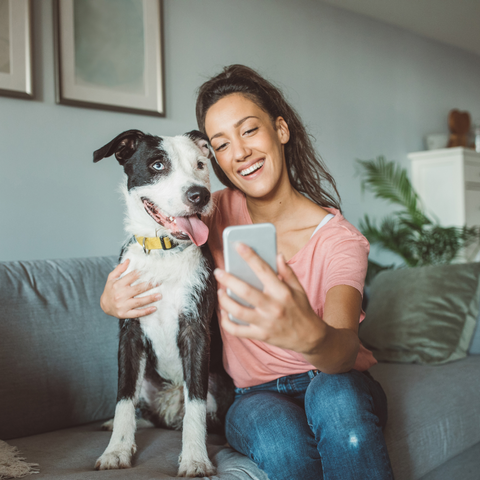Your Cart is Empty
August 23, 2023 3 min read
Petting your dog is one of the most natural ways to show affection and strengthen the bond between you and your canine companion. Dogs, like humans, enjoy physical touch and often find comfort in gentle strokes and caresses. However, what may seem like a simple act of love to us can sometimes be misinterpreted or uncomfortable for our furry friends. In this blog, we'll explore some common reasons why you may be petting your dog wrong and provide insights into how to create a more enjoyable and harmonious petting experience for both you and your beloved pup.

Understanding your dog's body language is crucial for successful petting sessions. Dogs communicate through various cues, such as tail wagging, ear position, and overall posture. If your dog is leaning away from you, avoiding eye contact, or displaying signs of tension (such as a stiff body or licking lips), it may indicate that they are not comfortable with the way you are petting them. Always pay attention to your dog's cues and adjust your touch accordingly.
While some dogs enjoy vigorous petting, others may prefer a gentler touch. Avoid rough or forceful strokes, especially when first initiating contact. Start with slow, gentle movements to gauge your dog's response. If they lean into your hand or appear relaxed, you're on the right track. However, if they shy away or seem tense, ease up on the pressure and opt for lighter strokes.

Dogs have preferred petting spots, and it can vary from one dog to another. Generally, most dogs enjoy being petted on the chest, back, and the base of their tail. However, some dogs may not like their paws, ears, or tail being touched. Pay attention to your dog's reactions to know which areas they enjoy and which ones they'd rather avoid.
Dogs thrive on routine and consistency. If you only pet your dog sporadically or randomly, they may find it confusing or unsettling. Aim to incorporate regular petting sessions into your daily routine, providing your dog with a sense of comfort and predictability.

Just like humans, dogs need their personal space and may not always be in the mood for attention. Avoid forcing your dog into a petting session if they seem uninterested or are seeking solitude. Always seek your dog's consent by observing their body language and letting them approach you for affection when they're ready.
While it's tempting to indulge in long petting sessions with our adorable pups, it's essential to respect their limits. Some dogs may enjoy extended petting, while others may become overwhelmed or tired. Keep petting sessions brief and let your dog dictate the duration based on their comfort level.

Older dogs or those with health issues may have sensitive areas or joint discomfort, making certain petting gestures unpleasant for them. Be mindful of your dog's age and health conditions when petting them, and adjust your touch to accommodate any potential sensitivities.
Conclusion
Properly petting your dog is an art that requires empathy, attentiveness, and respect for their individual preferences. By paying attention to your dog's body language, avoiding overwhelming touch, and respecting their boundaries, you can create a more harmonious and enjoyable petting experience for both you and your furry companion.
Remember, each dog is unique, so take the time to understand what your dog loves and what makes them uncomfortable. The key to a deep and loving bond with your canine companion lies in the simple act of petting done right – a heartfelt connection that will enrich both your lives for years to come.
Comments will be approved before showing up.